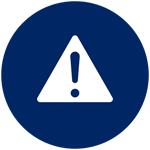 |
The Point to Point Transport Commissioner takes a risk-based approach to conducting audits on authorised taxi and booking service providers. |
Safety audits are structured to collect relevant information to determine the efficiency, effectiveness and reliability of safety management systems.
The safety audit tool has been developed to assist service providers to comply with safety standard obligations under the Point to Point Transport (Taxis and Hire Vehicles) Act 2016 and Point to Point Transport (Taxis and Hire Vehicles) Regulation 2017.
Service providers must maintain a safety management system that details the safety standards in the Regulation and identifies and records:
- reasonably foreseeable risks to the health and safety of drivers, passengers and others
- the control measures taken to eliminate or minimise the risks, and
- what is done to maintain the control measures
The level of detail in the safety management system will generally depend on the size of the business, the types of services being provided and the risks identified.
A record of the safety management system must be maintained as well as any consultation by the service provider with other persons that may have a safety duty.
Fact sheets and reference pages to consider when developing your safety management system:
- Duty of Care and Safety Management Systems
- Managing Driver Fatigue
- Notifiable Occurrences
- Safety Standards for Drivers
- Safety Standards for Taxis
- Safety Standards for Vehicles Providing Booked Services
The safety audit tool, further information and fact sheets can be found on pointtopoint.nsw.gov.au.
How will I know if I am going to be audited?
Service providers will be issued with an audit notice outlining the purpose of the audit, what it will cover, and the arrangements for determining the date, time and location.
The audit will be carried out by an auditor arranged by or approved by the Commissioner (the latter if the audit is arranged by the service provider). Auditors are trained to consider difference and diversity in the industry.
What happens at the end of the audit process?
The auditor will be required to complete an audit report and supply a copy to the Commissioner and the service provider. Once the Commissioner has reviewed this report, the service provider will be notified of the outcome and of any further action that may be required to be undertaken.
Elements of a safety management system that will be audited
1. Safety policy, commitment and objective
Service providers will need to demonstrate they have a safety policy that outlines their approach and commitment to safety and the objectives of their safety management system. The policy needs to outline the service and the obligations of all persons that have safety responsibilities.
The safety management system should detail safety requirements for any relevant duty holders within the business model. This may include the service provider, vehicle owners, affiliated providers and drivers.
2. Management accountabilities, responsibilities and communications
Service providers need to demonstrate that the relevant people within their business are aware of and accountable for their safety responsibilities. For example, a manager may oversee the safety management system and develop job descriptions that outline safety responsibilities for employees.
3. Risk management
Service providers need to explain how they identify, eliminate or minimise risks and how they are maintaining control measures. Common risks include violence, psychological risks, driver distractions, fatigue and picking up and setting down passengers. There are many control measures that can be implemented to minimise risk.
4. Procedures and documentation
Service providers will need to demonstrate that they are providing guidance to employees, contractors and drivers on how to perform their activities safely.
For example, procedures for driver health management or procedures to ensure vehicles and equipment are maintained.
5. Employee, contractor and driver monitoring
Service providers will need to demonstrate how they ensure drivers meet the safety standards outlined in the Regulations (such as conducting checks in the Driver Vehicle Dashboard), how they manage driver fatigue, and how they ensure drivers and other employees are not under the influence of drugs or alcohol while on duty.
6. On-boarding, training and education
Service providers will need to show that employees, contractors and drivers are appropriately trained in the relevant policies and procedures to understand and comply with safety requirements. This includes new and current employees and other duty holders such as vehicle owners, affiliated providers and drivers.
7. Incident/accident management and monitoring
Service providers will need to demonstrate that a system is in place to record incidents and accidents, and that relevant personnel are aware of recording and reporting processes. This includes notifiable occurrences, which must be notified to the Commissioner as soon as practicable.
8. Review and evaluation
Service providers will need to demonstrate that they have reviewed their safety management system and made any necessary updates or improvements. This will include identifying when a review should be undertaken.
Additionally, the safety audit will look at vehicle maintenance, inspections and insurance and feedback systems (complaints and compliments) used to assist the service provider to better their safety management system.
DISCLAIMER
The material in this fact sheet is for general information only. It does not reflect all the technicalities of the relevant law and you should seek legal advice in relation to your particular circumstances. The Point to Point Transport Commissioner does not accept any liability for any action taken in reliance on this document. If you need advice, LawAccess NSW is a free government telephone service that provides legal information, referral and occasionally advice to people who have a legal problem in NSW.




